Published 27 February 2022
Hinedere Beat is a platformer and eroge released for Windows in 2018 by Blaze Epic, the musician-turned-video game developer Larry Stover. It is the first video game I played in 2022. In this “yuri-themed, pseudo 8-bit mixture between a quasi-cinematic platformer and kinetic novel” (jargon storm!), the player controls a waifish, purple-shirted twenty-four-year-old named Fumika. She runs, jumps, and occasionally karate-kicks through parkour challenges in urban environments rendered in stylish pixel art. The degree of pixelation suggests the Famicom but with a superior palette. Each environment has its own color theming from which the two heroines’ pink and purple always stand out. The sexual images can be turned off and are by default. While there is nudity, there is nothing graphic.

A focused, confident platformer, Hinedere Beat is non-scrolling, with new challenges appearing on a screen-by-screen basis as in the earliest examples of its genre. The controls are simple: two buttons and the directional pad. The brawling combat is minor and just as simple, making ample room for the focus climbing, dodging obstacles, and—of course—platforming. Initially, the need to press down to drop from a high ledge without breaking Fumika’s neck did not seem natural to me, but I quickly picked up on it. In a fun touch, tutorials are written on the walls as graffiti. My only issue is that I never figured out how to dependably perform a jump long enough to clear more than one “tile” of space. Given that Hinedere Beat demands the longest jump Fumika can perform to clear chains of spikes, this proved the one annoyance in the gameplay.
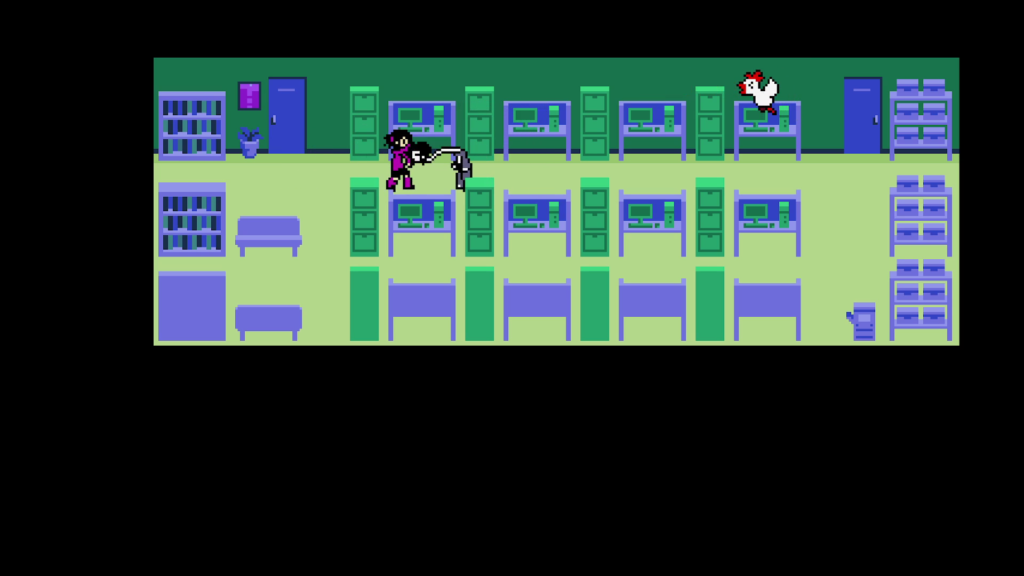
Enemies are assorted ghosts, yōkai, and robots. Red robots blast fire. White robots fire bullets. Bullets are almost impossible to dodge, but Fumika can avoid the fire blast if she is far away enough. If standing still, Fumika can block blows from enemies that attack by striking with their bodies, the rokurokubi and a red long-nosed goblin (that doesn’t seem to be a tengu?). Attacks from enemies such as the nukekubi or the ghostly shuriken-throwers cannot be blocked. Fumika’s arsenal consists of her feet and fists. Generally, smaller supernatural beings take one hit, larger supernatural enemies take two in a row or one flying kick, and robots are either invulnerable or must be knocked into a wall or off a ledge. Falling from too great a height, falling onto spikes, falling off the screen, or being struck by an enemy instantly kills Fumika. While opportunities for loss are plentiful, Hinedere Beat is fair and not at all punishing. The player has infinite lives, and every screen is a checkpoint. There are eleven levels total, each called a chapter and consisting of a linear series of screens to clear. With no exploration and minimal backtracking, the focus is entirely on the platforming challenges. I did not time my playthrough, but I’d guess Hinedere Beat takes no more than three hours to clear.
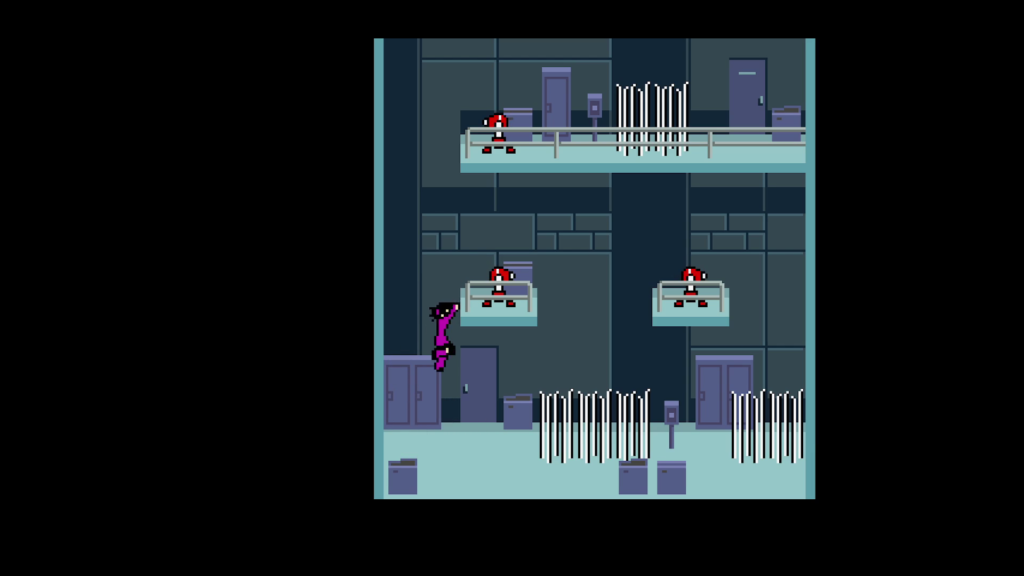
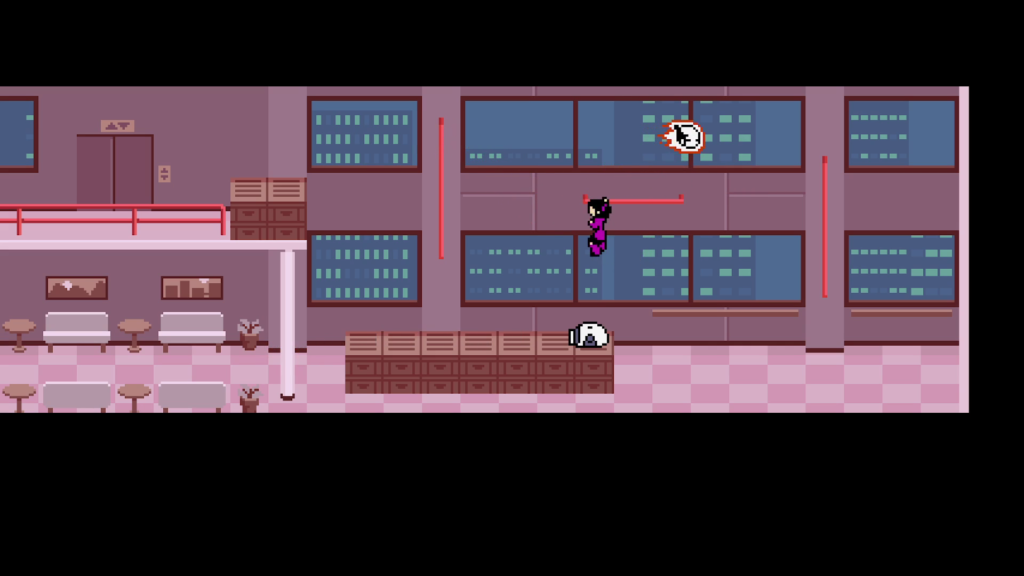
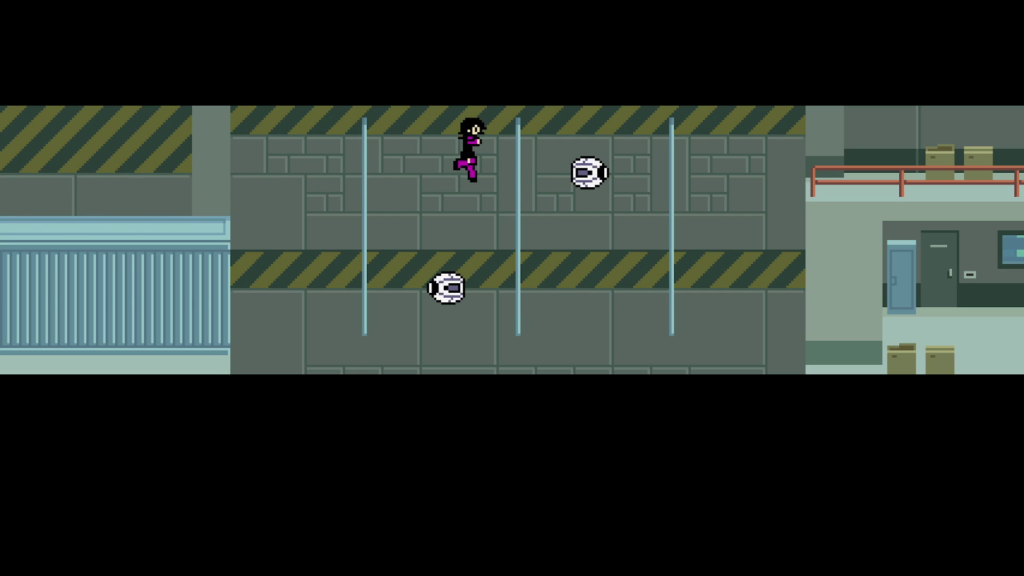
Hinedere Beat is a refinement on Blaze Epic’s earlier work, which includes similar gameplay, similar graphics, and similar Japanese themes but with more significant awkwardness. Trying out Hikikomori no Chuunibyou, I found less appealing writing and tedious brawling, and the parkour frustrated more in the first stage alone than in all of Hinedere Beat.
Each chapter of Hinedere Beat begins and ends with an unanimated cutscene. Every few minutes, after overcoming a series of tightly structured screens, is another. Fumika narrates. Almost every line of dialogue is her and Ayumi talking, though there are a small number of other characters. The story begins with Fumika awakening on a train, having missed her stop, and disembarking to meet Ayumi, a girl from her high school class whom she never knew well. But Ayumi says: “How can you act like you’ve forgotten about our date?” Their “date” turns out to consist largely of Fumika using her “idol-anime-inspired workout routine modified for parkour and home-study karate” to sprint around, kill monsters, and help Ayumi foil the evil Omae Corporation’s scheme to use a computer virus to control the supernatural beings emerging from a nearby cursed shrine. The shrine’s power changes the level layout too so that, when Fumika heads back from a mission, always finding Ayumi waiting for her despite Ayumi never appearing to move, the return trip is always different than the trip there. Fumika, though unamused with Ayumi’s leaps of plot logic, admits it is fun, almost as if, from her perspective as well, this were all a video game.
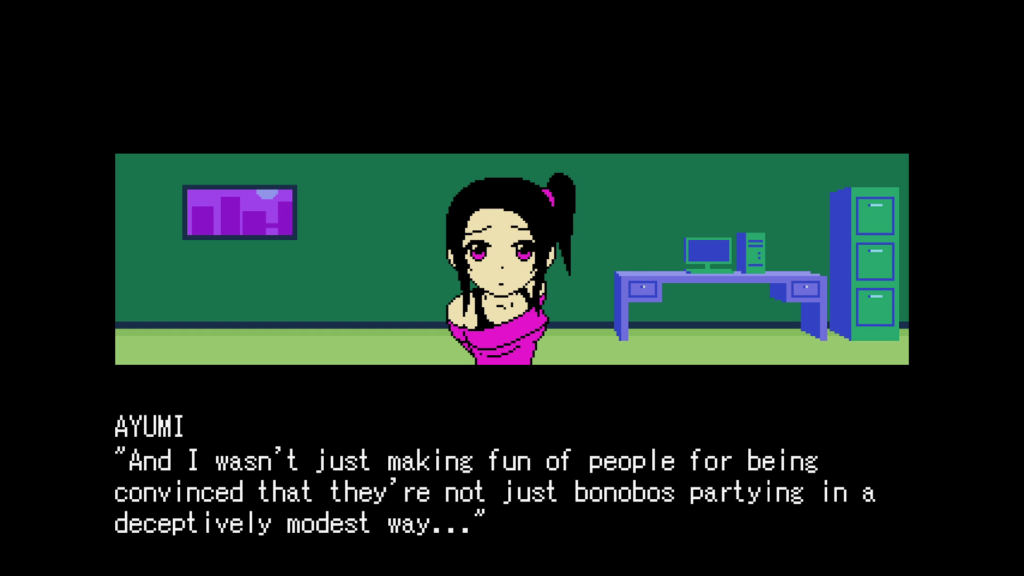
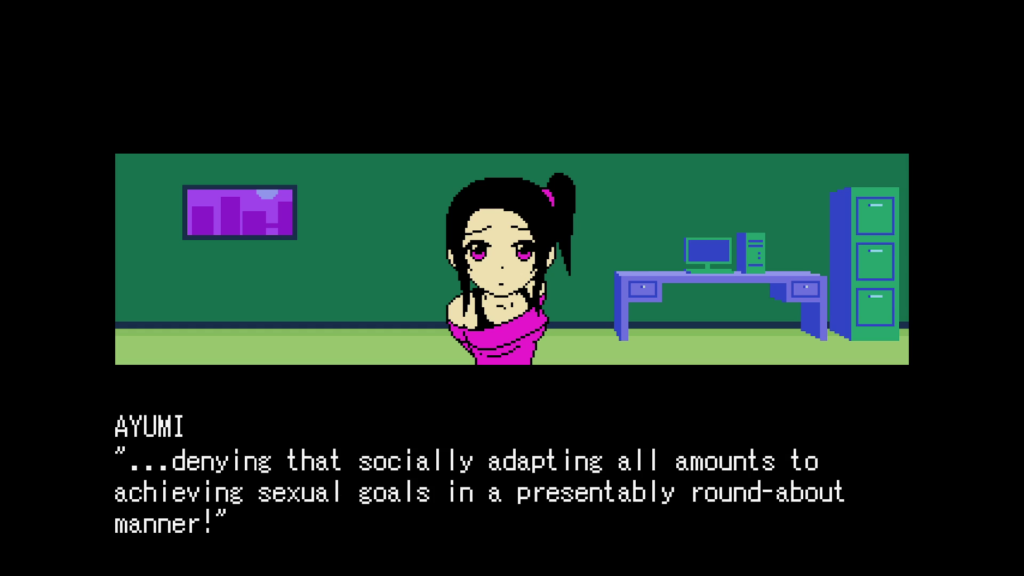
The writing of Hinedere Beat is idiosyncratic and not necessarily good. Stover uses way too many adverbs. The sex scenes are the most overwritten by far, the flaws of the prose style amplified to near-comedy:
“Blending the differing pieces of music together with just slight adjustments to timing in rhythm and shifts in key, broken rhythms begin abstractly accenting spordic [sic] melodies, harmonizing with Ayumi’s graciously greedy vocals, continually and conspicuously demanding attention with a hallucinatingly high sense of appreciation as accompaniment.”
“Hallucinatingly” is not a word but, more importantly, is a clunky adverb that does not need coining. In Hinedere Beat, perhaps because of the goodwill the smooth platforming and smooth music fosters, I find this pretentious turgidity endearing. Also, despite it being an adults-only video game, I do not remember any profanity in Hinedere Beat. That has to be some kind of record for an eroge. Whether any of this comes across as believable lesbian sex I will not remark on.
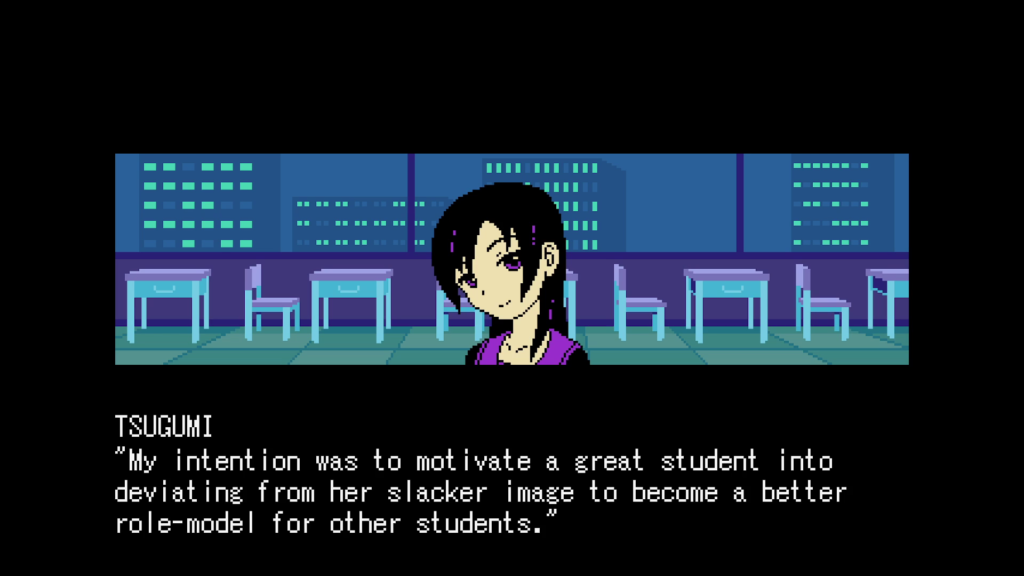
Most of the narration, however, is Fumika’s commentary on thoughts and nuances of the situation not necessarily obvious from the limited (though cute) dialogue portraits. The dialogue can be bumpy but is written better than the narration. Both seem ripped straight from manga. I expect Stover, no surprise, had been reading some yuri.
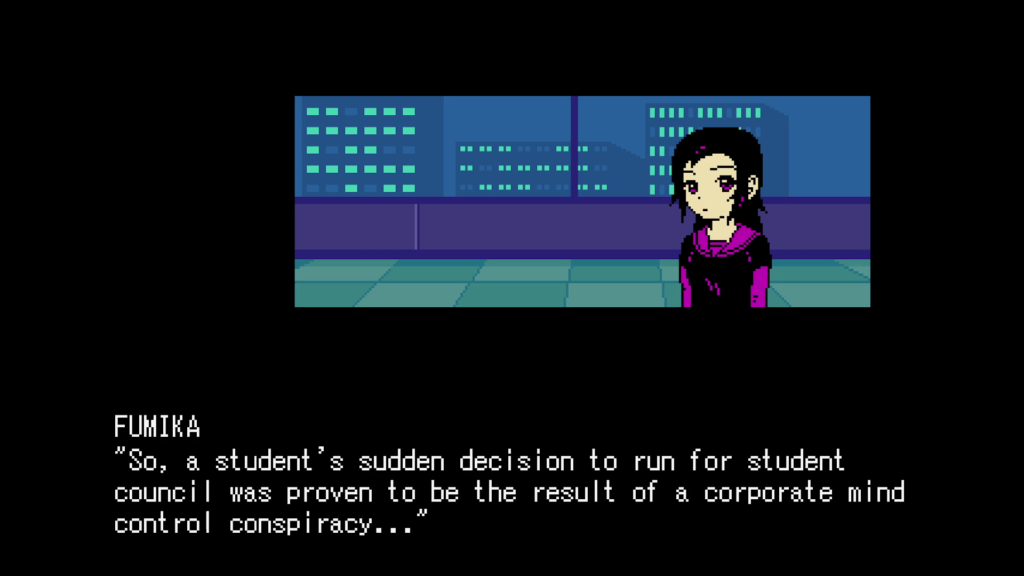
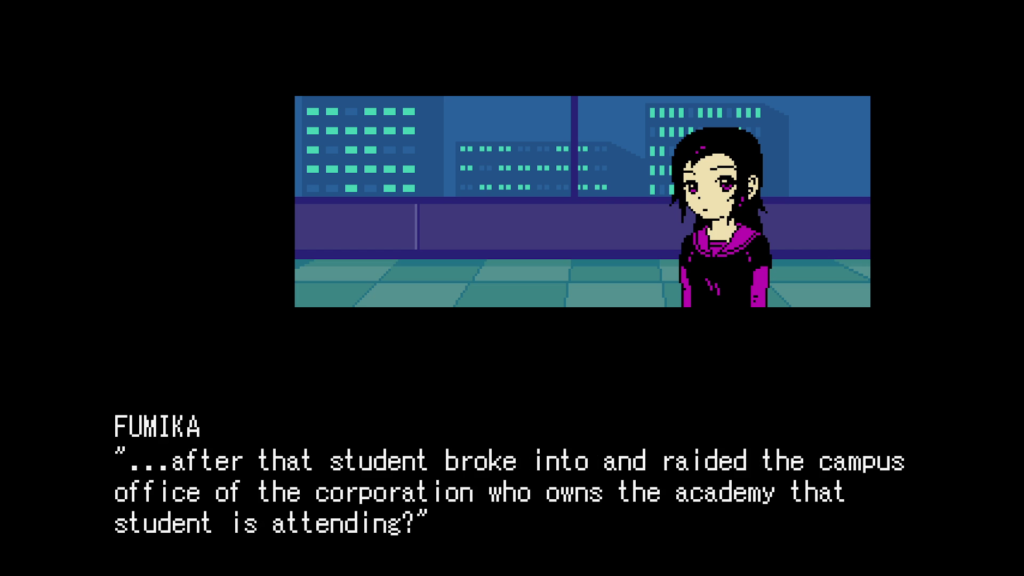


The plot makes little sense up until the reveal in Chapter 06, which confirms Fumika’s suspicion from Chapter 01 that these events are all a dream. But this is not an “it’s all a dream” copout because Ayumi turns out to be real in a surprising way. In Hinedere Beat, the supernatural plot twist is not a big deal. It is no more or less high-stakes or shocking than every other challenge and conversation that plays out over the same uninterrupted “[l]ofi, jazzy hip-hop” beats that, more than any other element, cement Hinedere Beat as a relaxing time. The lowkey soundtrack of short loops is included with the game and does wonders for putting the player into the state of flow. In Hinedere Beat, I guess we are, as the kids say, just vibing.
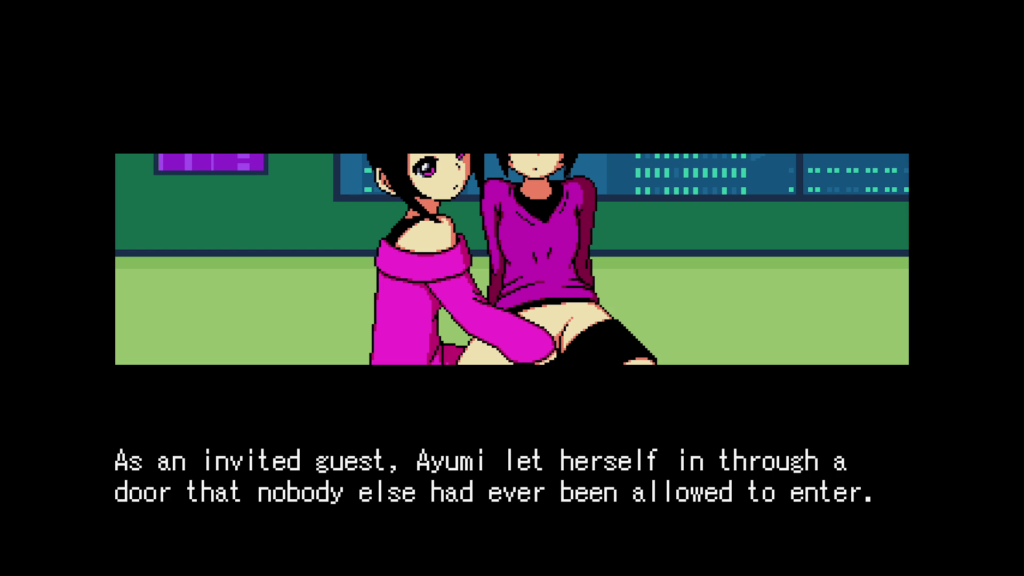
The gist of Fumika and Ayumi’s dynamic is that, mirroring their similar looks, they have identical personalities—both are sarcastic, “cynical,” somewhat conceited hedonists, “really terrible” according to Ayumi—except that Fumika is an introvert, and Ayumi an extrovert. Fumika wants to be in a romantic relationship, whereas Ayumi wants a sexual but not romantic relationship.
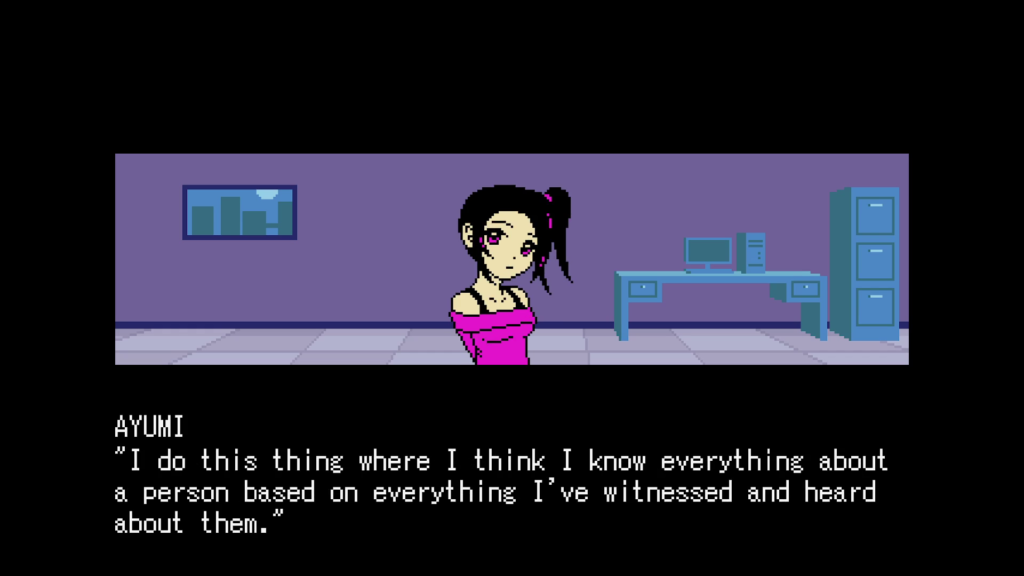
There is almost no drama. The characters are not whiny but work out their differences like adults. What tension another writer might wring from the possibility of a romance that lasts only the length of a dream is of no interest to Hinedere Beat, which keeps its touch light and wistful. Fumika and Ayumi speak about everything from the onmyōji trying to kill Ayumi, to whether they should have sex right now, to the fact that they have confirmed yōkai exist in a frank yet aloof manner befitting the soundtrack that evaporates any worry or uneasiness.
The definitive tone-setting moment occurs at the end of Chapter 03. After breaking into a building for lots of near-death yōkai-brawling and hopping between walkways, Fumika finds Ayumi. They have a sloppy make-out session, and Ayumi, apropos of nothing, pulls her tongue far enough out of Fumika’s mouth to say: “You really don’t think that human existence is worthless?”
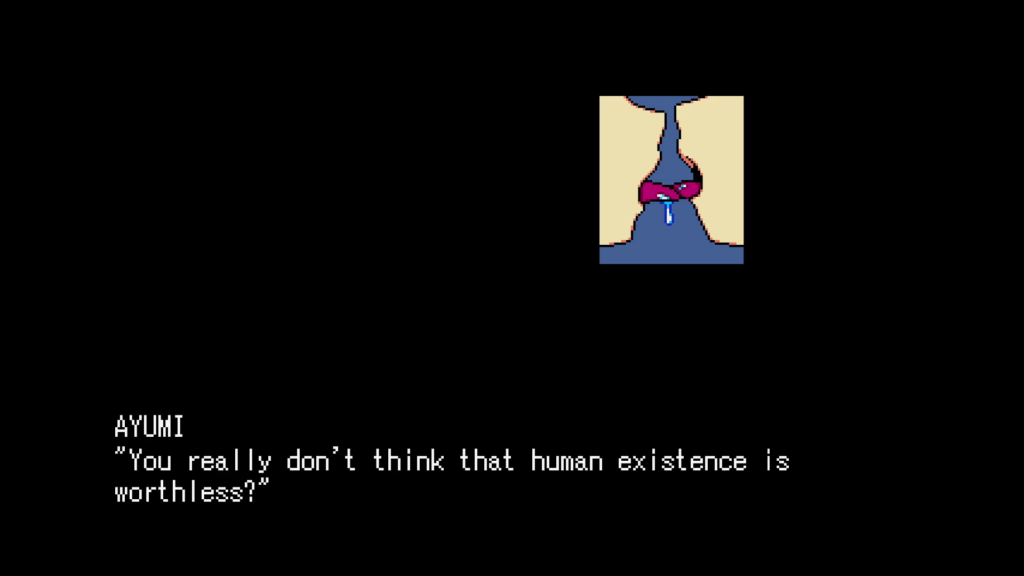
These two are having a steamy moment while trespassing in a supernatural building full of ghosts and monsters, but there is time for some armchair philosophy utterly unconnected to their situation. Some might deem this ridiculous—whether more ridiculous than doing parkour up a skyscraper to snatch a room key for a karaoke date, who knows? But dreams are ridiculous.
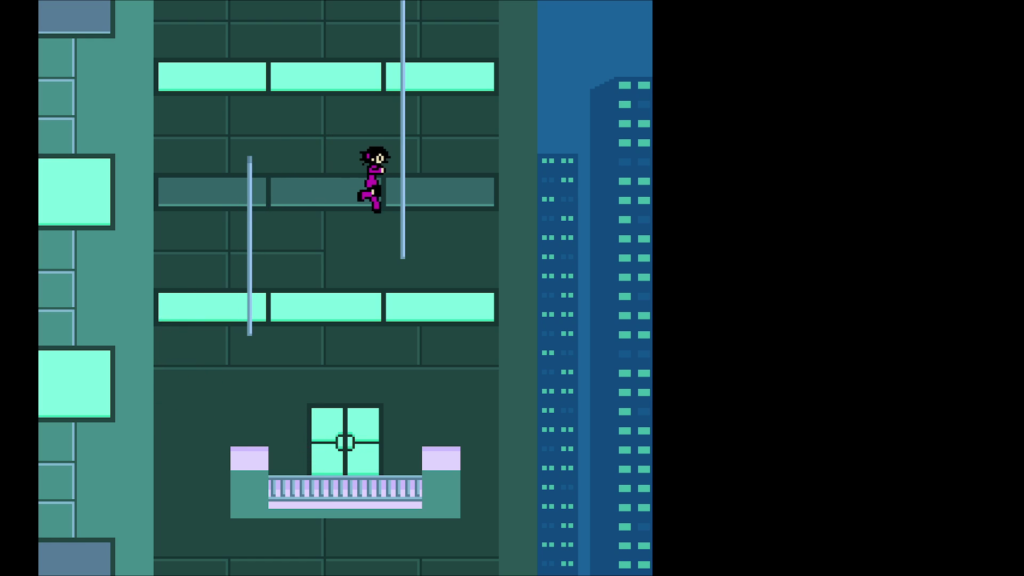
Some might also deem it ridiculous to pay attention to the story in a video game like this. But what I like about Hinedere Beat is how well it captures the vibe of (some of) my dreams. My best dreams tend to have semi-coherent narratives, more about intimacy with someone or some group who exist only in my dream than about the evil corporations, robots, and supernatural trouble frequently also present. These dreams might put me in mortal danger, but, like Fumika, I never feel stressed out. The ultimate fantasy in Hinedere Beat is the possibility that the friend or, in this case, lover you met and with whom you bonded in the dream might be there when you wake up too.
I expect many players would find the gameplay itself good but deem the overall Japanese setting, the romance, and the sex scenes “cringe” or exploitative and fetishizing. I will not claim such views are incorrect. However, for what it is, Hinedere Beat’s pixel art, music, wistful scenario, and pleasing level of challenge come together for a fun time.